|
Do you know the best way to treat an injury is to prevent it from happening in the first place? Whenever we do ANY physical activity with our dogs there is a certain amount of risk we take on. Accidents happen, but that doesn't mean we can't be proactive and help to reduce our dog’s chances of getting hurt. So, what can we do as their training partners and biggest advocates to reduce their chance of injury? In our previous blogs breaking down the sport of agility we took a look at the physical demands and the potential injuries that can occur in the sport. While the physical demands of the sport are high and the injuries our dogs can experience can be frightening, we can still do a lot to prevent an injury from occurring! In Part Three of our agility sport breakdown we take a closer look at injury prevention strategies and the simple things we can do NOW to help our dogs avoid getting hurt in order to enjoy a long sporting career. Let’s take a look at my top injury prevention tips for the agility dog. Injury Prevention for the Agility Dog 1) Fitness and Conditioning Conditioning and fitness training your dog is one the BEST strategies to prevent injuries in dogs. Weekly, consistent, and targeted exercises can help your dog’s body stay strong and resilient to minimize the stress imposed from the action-packed game of agility. Regular conditioning work can improve your dog’s strength, flexibility, power, mobility, health, body awareness and balance as well as their endurance and stamina. Research has shown that strength and resistance training improves strength, power, and speed and also helps to increase muscle mass and decrease risk of injury (Dahab 2009). Strength training should be an important part of any training program for athletes (both human and canine!). Research has also shown that well-trained athletes require a greater amount of specificity, individualization, and variation with their conditioning programs. This tailored approach helps to maximize the dog’s physical gains and augment any potential breed limitations (e.g. no tail, straight front end, long back). Not all dogs have the classic agility body but they can definitely still play the game!! As your dog ages, you will also have to adjust your approach to help an aging body. Older dogs' ability to produce power decreases as they age and their recovery times will take longer. For older canines, our goals should focus on keeping our dog fit and healthy to continue enjoying the sport as they age. This may mean we are reducing the physical challenges of the sport (i.e. lowering jump heights) and helping them stay in good physical form with conditioning exercises. Developing a fitness program that is balanced and addresses the unique physical needs of your dog is crucial to their success in agility. In Part Four of the agility sport break down we'll dive deeper into program design (e.g. conditioning exercises) for the agility dog. 2) Warm Up and Cool Down Did you know that the risk of injury can be significantly reduced by warming up and cooling down your dog? The research behind human athletic performance is robust and offers us some important insight into areas we need to consider for our dogs. While there is limited research replicating some of these concepts for our canine counterparts there are significant similarities in musculoskeletal systems of humans and dogs with respect to how tissues respond and recover. We can confidently, therefore, conclude the findings from human research to create guidelines for our performance dogs by using our professional expertise and experiences to form sensible conclusions. Here are some key things to consider when warming up and cooling down your dog.
Warm up and cool down is a very simple yet powerful thing you can do to actively reduce the risk of injury to your agility dog. The truth is, however, is that warming up and cooling down is often missed by owners! While many trial venues offer warm up jumps for dogs and handlers to use I often see this used more as a way of getting into a working mindset than as a priming of muscles. A couple jumps before entering the ring is not an adequate warm-up! We should approach warm up and cool down as an essential part of our dog’s athletic performance. For more information on warm up and cool down you can find my e-book here. 3) Rest Days and Avoid Over Training We all need breaks! Just think about how you feel after leg day at the gym, there’s no way you want to go for a jog after that!! Dogs are designed differently than humans and the way they’re designed means that they engage all of their body when they move. That means that unlike humans who can hit the gym the next day and focus on a different part of their body, dogs need to take a longer break before getting back to work. Our dog’s age, physical condition, health, and experience level will also alter the way they perform and recover from the various physical challenges present in the sport of agility. Our rest days should reflect the needs of our dogs. A dog new to competition may need more recover time from a weekend competition than the experienced competitor. Your dog’s weekly training schedule should also include rest days between training and competition days. Contrary to popular belief, both human and canine bodies do not make gains in their strength, power, balance or flexibility when actually working out. Rather these gains are made when our bodies are allowed to rest and recover. The work out is the stimulus but the rest provided is the body's physical response and where the changes and adaptation start to happen. It’s important to have a balanced schedule of agility training days, workshops/seminars, competition days, and rest days! On rest days, I do not ask my dogs for any structured or formal training/exercise. I keep things light with exercise and avoid long hikes/walks -remember they are supposed to be resting! I often like to use my rest days for mental enrichment with my dogs. Aside from rest days, we also want to avoid over training our dogs. Keep in mind the physical aspects of agility and be mindful of how many repetitions you ask your dog to perform (e.g specific obstacle training/sequences/# of runs at a trial). Doing too much of the same obstacle, sequence or too many runs in a day can lead to both mental and physical exhaustion. Overtraining can be a common problem especially for active, sporting dogs. Our dogs have a love to work and we, in turn, love to work with them. The potential downfall lies in our dogs eagerness which may trick us into asking more of our dog than we should. Human research has shown that athletes who are over trained display more fatigue in the cognitive control part of their brain system. Dogs are notorious for making bad decisions when they are fatigued so allowing them some time to rest will improve their decisions, allow their body to grow and improve and assist with performance recovery! Over the course of a year, I recommend taking one month off once or twice a year (depending on your current training/competition schedule) to give your dog a break from their sport specific training. It is still imperative that your dog stays active during this break but with other activities (e.g. hikes, increased conditioning work). You want to avoid taking too long of a break or you may run into something called the reversibility effect. The reversibility effect, in essence, means use it or lose it (Romer 2003). An athlete, human or canine, will begin to lose the effects of training 3-4 weeks after they stop regular training. This means their strength, flexibility, and aerobic fitness will begin to diminish over time. While rests are important for recovery, extended breaks can also have consequences. If you’re returning to activity after an extended break don’t assume your dog can start back where they left off! To avoid the risk of injury, make sure to start back slowly. For help on what to do during a break get in touch with us to learn which exercises are critical during an offseason! 4) Age Appropriate 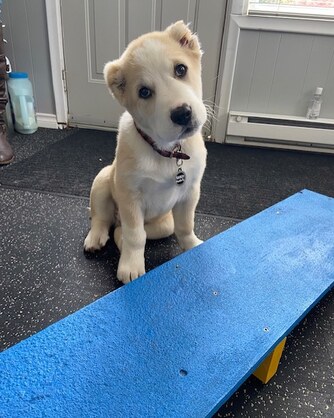 Gary, at 9.5 weeks old (McIntyre Canine Rehabilitation) Gary, at 9.5 weeks old (McIntyre Canine Rehabilitation) Make sure that the activity you're doing is age appropriate! Puppies, adult, and senior dogs all have different physical abilities and you'll need to modify activity for those abilities. For young puppies we want to be especially careful of the activities they do. When your puppy grows the weakest part of their skeleton is their growth plates – so protecting them at this stage is vital in preventing injury. Growth plates are soft areas of developing cartilage tissue found by the ends of the dog's long bones. They are typically made of cartilage when the puppy is born, but gradually they calcify and transform into denser bone as the puppy matures. If an injury to the growth plate occurs, the dividing cartilage cells may slow down or come to a halt. This can become a major issue for puppies as they grow as the unaffected healthy side will continue to grow normally which can lead to potential deformities. As our dogs age and grow in experience, training, and physique their training considerations will also have to change to suit. Even with our adult dogs we want to be aware of what we ask of them. Finally, our older dogs will also need some special considerations in the number of repetitions we ask them to perform an obstacle or we may need to reduce some of the physical challenges by entering our dogs in the special or veteran class which lowers jump heights and reduces the incline height of the A-Frame. 5) Surface Considerations It’s important to be mindful of the footing you train and compete on as not all surfaces are created equal! Some terrain will cause your dog to slip and slide more than others, even surfaces of similar material. For example, poorly maintained or poor-quality turf, can cause your dog to slip more. Aging AstroTurf can begin to part at the seams, causing tripping hazards, and have overly compacted infill reducing the shock absorption of the turf. If you’re working on a surface that is less than ideal consider the number of reps you do or what you’re willing to ask you dog to do. Remember, even grass can be slippery in the rain! Take caution when the weather changes. The ideal agility footing should be:
6) Supplements Not all supplements are created equal! Did you know that nutritional supplements are an unregulated industry? This means that there can be little certainty that what shows up on the supplement label is actually what is in the bottle. Remember, that not one nutraceutical will cover everything! Looking for the right supplement combo for your dog is key and we’re always happy to help you find that specific combo that works for your dog. This blog is not meant to dive deeply into this topic however, nutraceuticals play a crucial role in supporting the body in the physical challenges of agility. There is still lots of research being conducted to find out which supplements are best for the sport dogs and it can be difficult to wade through all the different options available. Asking your health professional or vet for recommendations is a great way to cut through the noise and find something that is appropriate for your dog and their unique needs. 7) Weight Management Keeping your dog at a proper weight is crucial for their joint health and injury prevention. Research in humans has shown that for every 1lb of extra weight resulted in a subsequent 4 lbs increase of load on joints (Messier, 2005). Imagine the overweight quadruped, what an extra pound can do to their joints and body? For the performance dog, extra weight puts additional stress on their joints, muscles, ligaments and increases their chances of injury! A good rule of thumb to determine the proper weight for your dog is that the 3 back ribs should be easily seen if a dog is standing naturally – with coated dogs, you will have to feel through their coat to tell. If your dog is overweight, avoid strenuous and concussive (eg high impact) exercises. If you're not sure if your dog is overweight or are looking to help them trim extra pounds consult with your health care provider for professional advice. Watch the underweight dog as well. Dogs also need enough calories to sustain them for the activities that they are doing! Another factor to consider is the height you ask your dog to jump. In agility, jump heights are measured only as a function of the dog’s height. However, dogs that jump the same height can have a very different risk of injury. Often times we think, if our dog is larger (e.g. lab) they probably have a harder time jumping than a smaller dog (e.g. corgi). A study looking at injuries to agility dog's digits in training and competition found that the higher weight to height ratio you have the higher the risk of injury (O.R 1.5) to digits. (Sellon, 2018). Using the Weight to Height Ratio can help us understand how much stress is placed on our dogs and allow us to compare the relative risk of different sizes of dogs, as well as similar dogs that jump the same jump height (Sellon, 2018). To use the Weight to Height Ratio take your dog’s weight in pounds and divide it by their height at the withers (point of the shoulder). For example, a lab that weighs 70lbs and stands 24 inches at the wither has a weight to height ratio of 2.9 On the other hand, a corgi that is 35lbs and stands 13 inches at the withers has a weight to height ratio of 2.7. This means that although they are very different in height and weight, they each have a similar amount of stress on their bodies. Any time their weight to height ratio is over 2.5, there is more pressure on the dog’s musculoskeletal system which can increase their chances of injury (Zink 1996). This means dogs will have to exert way more effort to move, especially when jumping. The higher this ratio, the harder it is for the dog to jump; the lower this ratio, the easier it is for the dog to jump. Certain dogs (e.g. any large breed) will always be at more risk than their smaller counterparts. Keeping your dog at a healthy weight for their breed and body type is a simple, yet highly effective, preventative measure you can take to reduce the risk of injury. 8) Quarterly Assessments Although injuries may seem sudden, not many injuries “just happen.” A dog that yelps suddenly while running and holding a leg up in apparent pain may seem like a sudden onset injury but that might not always be the case. Many injuries occur because your dog has been moving in an unbalanced way for an extended period of time. These imbalance can cause some parts of the body to undergo greater wear and tear, although not enough to cause noticeable lameness. Over time, however, those stressed areas can become more vulnerable to injury. Baseline assessments can help detect the more subtle clues that an injury may be brewing and can help us work towards preventing an injury. A qualified health professional will be able to quickly determine if something is off with your dog and implement a treatment plan that will address muscle imbalances, weaknesses, and underlying issues. I recommend 4 baseline assessments per year (every 3 months). These assessments will often include spine and soft tissue evaluation, gait analysis, weight distribution analysis (e.g. stance analyzer), joint evaluation, muscle girth measurements, functional tests for balance, strength and body awareness. Baseline assessments not only help in detecting the early, subtle signs of potential injuries but they also help us get a clear picture of our dog’s body and creates objective data points of health and body condition for your health professionals to refer back to. Finally, regular assessments are a great opportunity to review your dog's current fitness program, and add new challenges and progressions. A final word...Early preventative conditioning work, finding appropriate and safe activities that are suitable for your dog's age, body weight, and build, and making sure your dog doesn't overdo things are key factors in preventing injuries. Even with the best preventive measures in place, injuries can still happen. When working or playing with your dog keep in mind a couple things...
In agility, there are a lot of elements that remain out of our control such as course design, the equipment used, and the weather we train and compete in. There is, however, still a lot that is in our control and it’s important to focus on this part of the sport! Approach your agility training and competition thoughtfully. While agility is overall a fun sport to do with your dog is not without its risks. Approaching the sport carelessly or without much thought to the physical demands places your dog at an increased risk of injury. Finally, there is one HUGE thing we can do to help our dog’s meet the physical demands of agility and reduce their risk of injury! Canine conditioning is crucial to prevent injury and prepare agility dogs for the physical challenges of the sport. In our next and final instalment of our breakdown of the sport of agility we’ll take a look at how to condition the agility dog and what to include in our conditioning programs to maximize performance and reduce the risk of injury. SourcesDahab KS, McCambridge TM. Strength training in children and adolescents: raising the bar for young athletes? Sports Health. 2009;1(3):223-226. doi:10.1177/1941738109334215
Debra C. Sellon, Katherine Martucci, John R. Wenz, Denis J. Marcellin-Little, Michelle Powers, Kimberly L. Cullen. “A Survey of risk factors for digit injuries among dogs training and competing in agility events.” J Am Vet Med Assoc (2018); 252, 75-83. Messier SP, Gutekunst DJ, Davis C, DeVita P. Weight loss reduces knee‐joint loads in overweight and obese older adults with knee osteoarthritis. Arthritis and rheumatism. 2005;52(7):2026-2032. doi:10.1002/art.21139 Romer LM, McConnell AK. Specificity and reversibility of inspiratory muscle training. Medicine and science in sports and exercise. 2003;35(2):237-244. doi:10.1249/01.MSS.0000048642.58419.1E Zink, Chris and Julie Daniels. “Jumping from A to Z.” Canine Sports Productions. 1996.
0 Comments
Leave a Reply. |
AuthorCarolyn McIntyre Archives
March 2024
Categories
All
|
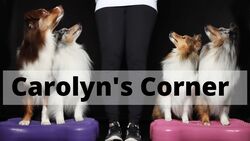
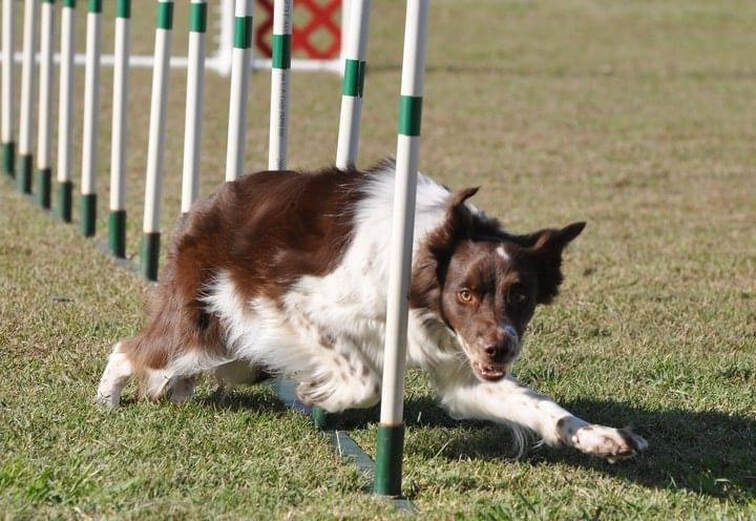
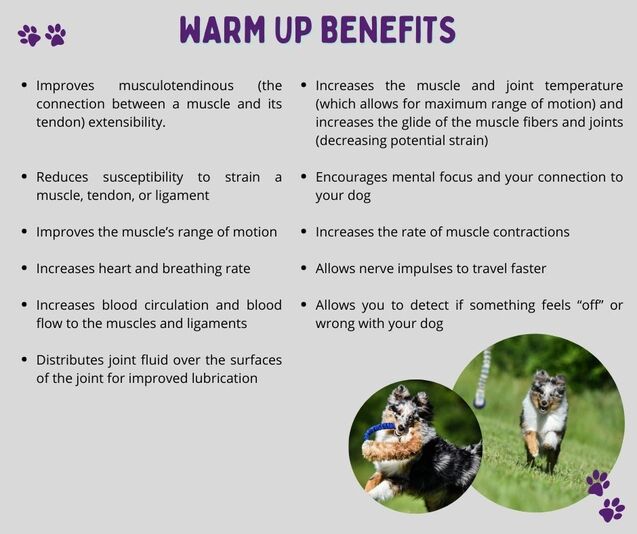
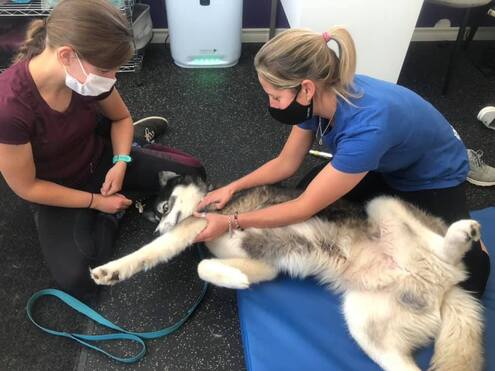
 RSS Feed
RSS Feed